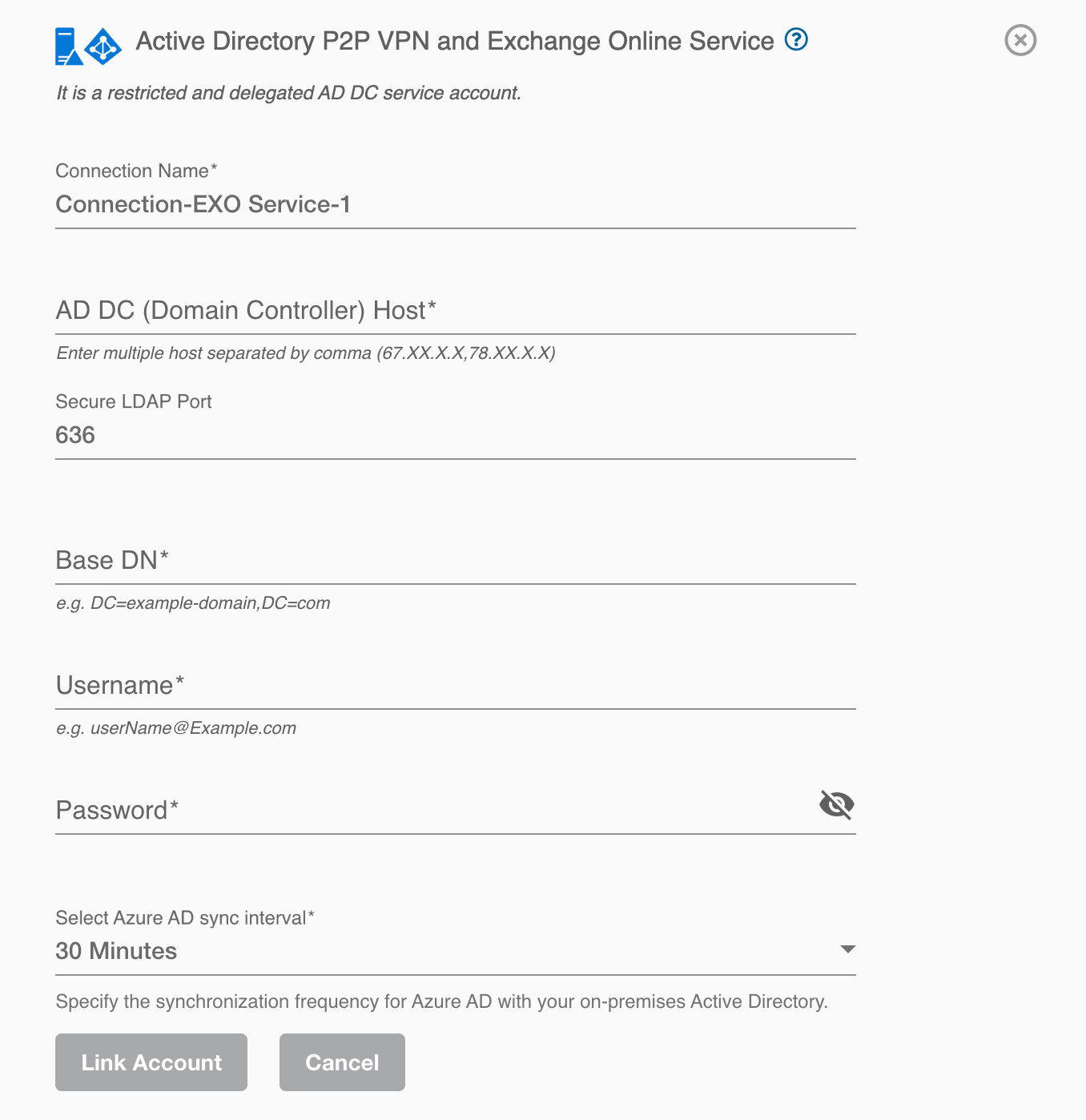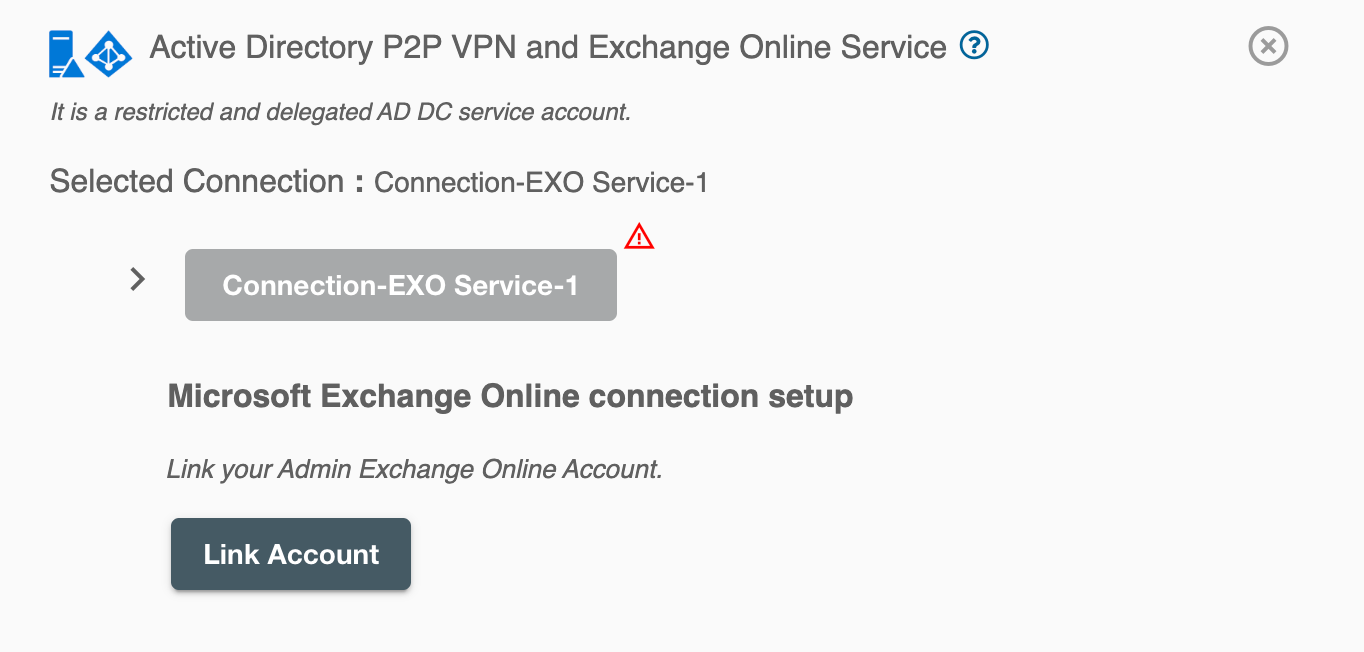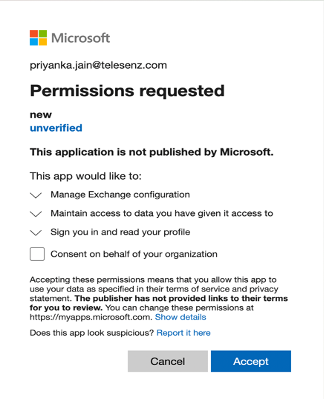Hybrid with Exchange Online¶
By linking your Hybrid and Exchange Online account with hire2retire, you can authorize RoboMQ to have a delegated access on your behalf to both applications. Hire2Retire needs the following permissions on your account to provide a seamless integration experience:
For Exchange Online¶
| Role | Explanation |
|---|---|
| Exchange Administration | Can manage all aspects of the Exchange product. |
Create a Connection¶
Hybrid Connection¶
Hire2Retire requires the following details to create a connection.
- Connection Name - A user defined nomenclature for your connection. By default, the connect name is "Connection-Directory Service", you can change the name as per your preferences.
- Host - The host name is the IP address of your Active Directory Server. User can add more then one host for the same account.
- Port - The TCP/IP port on which the Active Directory server is listening. Hire2Retire will only establish the LDAP connection with your SSL port. (The default is 636)
- Base DN - It is a collection of objects that Hire2Retire will access within an Active Directory network. An object can be a single user, a group of users or a hardware component, such as a computer or printer. Each base DN holds a database containing object identity information. It should be given in the format "DC=example-domain,DC=com"
- Username - The username to access the Active Directory server. Please make sure it belongs to the security group "Domain Admin" and has delegated control to target Organization Units (OU).
- Password - The Password to access the Active Directory server.

Figure 1. Hybrid Connection Set Up Page
Exchange Online Connection¶
To establish exchange online connection, you need to have an Azure Active Directory account with:
1. Exchange administrator role privileges
2. MFA as toggled OFF

Figure 2. Hybrid with Exchange Online Connection set up
Here are the permissions requested by Hire2Retire from your Microsoft Exchange Online account:

Figure 3. Permissions requested from Microsoft Exchange Online